Sometimes, I want to shout out to the world about the deep love I carry within me for those men and women who are bright lights of history in our dark oppressive world of racism/European domination. I want to talk about journeys and love that grows mightily when one takes a penetrating look at the African/Black experience. Indeed, “I find, in being Black, a thing of beauty, a joy, a strength, a secret cup of gladness.” (Ossie Davis) African people never stole the land of others. “Africa is our land. Not through murder, not through theft, not by way of violence.”
Sometimes I am in a sentimental mood.
It’s the reason Kentake Page is a love affair. This love affair began when I was a child and felt a great pride (rather than shame) in our people’s survival of the Maafa/Atlantic slavery). We must remember this: “The best of Africa (only those who were strong and healthy) were carried away in the slave ships and the strongest of the best, survived. We are the children of the strong.”
My love affair with Black history was further cemented when I read, The Hero with an African Face by Clyde W. Ford.
Ford wrote, “When I looked at the historical experience of African Americans, I saw a series of episodes, one slowly dissolving into the next: “Capture in Africa,” “Monstrous Transport Through the Middle Passage,” “The Horrors of Slavery,” “Whispers of Rebellion and Revolt,” “Promises of Freedom Broken,” “The Entrenchment of Racism,” and “The Ongoing Struggle for Freedom and Justice.” It would be easy to place them in an account of victimization focusing on the atrocities of racism and oppression, and just as easy to fit them into a narrative of denial claiming that these events happened a long time ago and so should not affect us now… But in pondering how to portray the historical and present day experiences of African Americans in a story that transcended victimization and denial, I asked myself, ‘If a single person had lived through all these experiences, how would I describe that person’s life?’ I realized that this series of episodes reminded me of the epic journey of a hero or heroine…”
A hero with an African face is Dr. Ivan Van Sertima. After asserting that “We are the invisible chapter of history,” Van Sertima embarked on an epic journey to heal our “historylessness.” It was a passionate quest for excellence. He became one of the most prolific scholars.
Van Sertima was born in Guyana, South America on January 26, 1935. He was educated at the School of Oriental and African Studies (SOAS: London University) and the Rutgers Graduate School and holds degrees in African Studies and Anthropology. Van Sertima said he encountered such pervasive racism during his university studies (SOAS) that at one point he tried to commit suicide.
He came to prominence with the publication of his major pioneering work, “They Came Before Columbus: The African Presence In Ancient America“. The book was so controversial that he was invited before a congressional committee to present his findings. Van Sertima gave evidence from a wide range of sources to support his thesis that there was contact between Africa and America before Columbus. According to Van Sertima:
“The book taught me a lot about the prevailing climate of prejudice that inspired many attacks that were leveled against it… What the book revealed to me is that it does not matter how well documented, how well-supported the new facts one presents to the world may be, the old habits of thinking about the Afrikan do not easily change.”
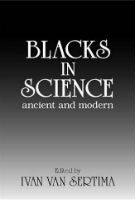 After his book was published, Van Sertima realized he would not be published again. He went on to establish the Journal of African Civilizations, which he exclusively edited and published for decades. One of the books, he edited was Blacks in Science: Ancient and Modern, which is one of my top ten non-fiction books. The book is a powerful narrative on African ingenuity and technological innovation – steel making, architectural constructions, mathematical and writing systems, astronomical observatories, and navigation.
After his book was published, Van Sertima realized he would not be published again. He went on to establish the Journal of African Civilizations, which he exclusively edited and published for decades. One of the books, he edited was Blacks in Science: Ancient and Modern, which is one of my top ten non-fiction books. The book is a powerful narrative on African ingenuity and technological innovation – steel making, architectural constructions, mathematical and writing systems, astronomical observatories, and navigation.
Here are 7 Things You Would Have Learned If You Read Blacks in Science by Ivan Van Sertima
1. Lost Sciences of Africa: Communication
One of the marvels of Africa, which mystified many early travellers was the way in which some of its peoples communicated information almost instantly over vast distances. Europeans often told stories of arriving in a place after many days’ journey to find that the people there already knew the details of an event – a battle or a birth, a death or a disaster – which had occurred in a far part of the country from whence they had just come. This was before the telegraphic morse-code or the radio. African people had used finely tuned instruments to relay messages over these distances, sometimes with drum-scripts so ingenious they came close to a rhythmic mimicking of the human voice.
Charles Breasted wrote about a method the Nubians used to transmit the human voice for a distance of nearly two miles across the Nile.
“We never ceased marvelling, at their ability to converse with one another across great stretches of water. Again and again in places where the Nile had suddenly widened to a breadth of almost two miles so that we would have to inquire locally regarding possible inscriptions or ruins along the farther shore we would watch a man address a friend so far away on the opposite bank as to be a mere speck wholly out of earshot. He would stand at the very edges of the river, perhaps ten feet above its surface, and cupping his hands some four inches in front of his lips, would talk into the water at an angle of about 45 degrees, in a loud voice but without shouting. At intervals he would stop and listen while the distant man evidently replied in kind. But we who stood close by heard no sound. Presently the exchange would end, and he would tell us in a matter-of-fact way what he had learned.”
The ability to communicate information swiftly over considerable distances must have been a great boon to West Africans whom between the thirteenth and fifteenth centuries, had to administer empires as Europe put together.
Source: The Lost Sciences of Africa: An Overview by Ivan Van Sertima in Blacks in Science edited by Ivan Van Sertima.
2. The Ishango Bone
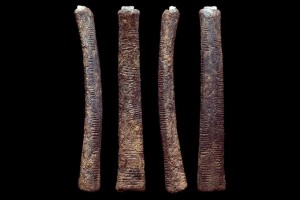
From a mathematical point of view, the most interesting find in Africa is a carved bone discovered at the fishing site of Ishango near the Semliki River, in Zaire (now Democratic Republic of the Congo). It is a bone tool handle having notches arranged in definite patterns and a bit of quartz fixed in a narrow cavity in its head. It dates back to the period between 9000 BC and 6500 BC, and indicates that a calendrical or numeration system was known to the fishing and hunting people of the area. The arrangement of notches on the bone show a knowledge of multiplication by two and of prime numbers.
The discoverer of the artifact, Dr. Jean de Heinzelin suggests that it may have been used for engraving or writing. He was particularly intrigued by the markings on the bone. There are three separate columns, each consisting of sets of notches arranged in distinct patterns. One column has four groups consist of eleven, thirteen, seventeen and nineteen notches; these are the prime numbers between ten and twenty. In another column the groups consist of eleven, twenty-one, nineteen and nine notches, in that order. The pattern here may be 10 + 1, 20 + 1, 20 – 1, 10 -1. The third column has the notches arranged in eight groups, in the following order: 3, 6, 4, 8, 10, 5, 5, 7. The 3 and the 6 are close together, followed by a space, followed by 10 and two 5’s. This arrangement seems to be related to the operation of doubling. Heinzelin conclude that the bone may have been the artifact of a people who used a number system based on ten, and who were also familiar with prime number.
However, according to Alexander Marshack, who has examined the markings on the artifact by microscope, the Ishango bone represents a notational and counting system. He plotted the engraved marks on the bone against a lunar model and noted “a close tally between the groups of mark and the astronomical lunar periods.
Source: The Yoruba Number System by Claudia Zaslavsky in Blacks in Science edited by Ivan Van Sertima.
3. African Stonehenge
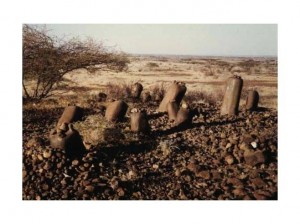
An astronomical observatory, dated 300 years before Christ, was discovered on the edge of Lake Turkana in Kenya. It was called, Namoratunga, which means “stone people” in the language of the local Turkana people.
Namoratunga is a large cemetery and rock art site where the graves are surrounded by massive standing stones which have been engraved with cattle brand symbols. The burial practices at Namoratunga closely parallel customs practiced by the Konso of southern Ethiopia, a Cushitic-speaking people.
Another site, Namoratunga ll was found located on the eastern edge of the Losidok range overlooking the Lake Turkana. In addition to standing stones circling the one grave at Namoratunga ll, an alignment of 19 basalt pillars were nonrandomly oriented toward certain stars and constellations. Eastern Cushites have a sophisticated calendar which uses the rising of seven stars or constellations in conjunction with various phases of the moon to calculate a 12 month, 354-day year. The seven stars or constellations include Triangulum, Pleiades, aldebaran, Bellatrix, Central Oiron, Saiph and Sirius.
Every stone, except one, did line up with the rising of these stars and the location of these constellations. The evidence suggests that a prehistoric calendar based on detailed astronomical knowledge was in use in eastern Africa by the first millennium BC.
Source: Namoratunga: The First Archaeoastronomical Evidence in Sub-Saharan Africa by B.M. Lynch and L.H. Robbins in Blacks in Science edited by Ivan Van Sertima.
4. The African Background of Medical Science
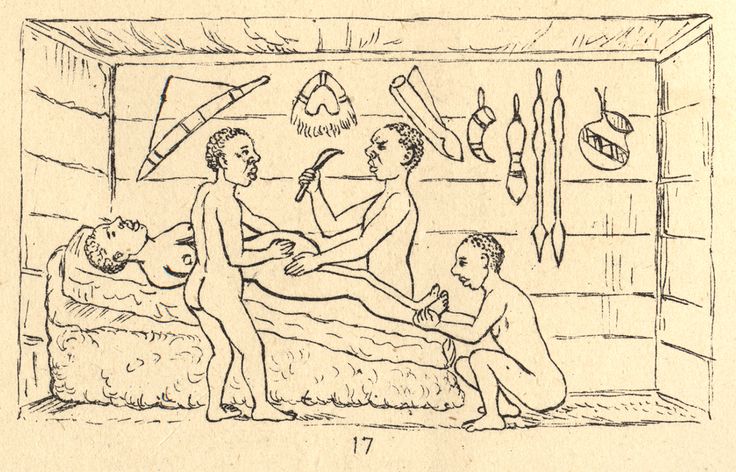
Illustration from Dr. R.W. Felkin’s description of the Caesarean section. Edinburgh Medical Journal, 1884.
In Kemet (ancient Egypt), Africans were writing medical textbooks as early as 5000 years ago. This indicates not only a mature civilization but also a long period of medical development. Out of the hundreds and thousands of medical papyri that must have been written, only 10 have come down to us, the most important being the Ebers and Edwin Smith Papyri (European names to African achievements). These 10 papyri form the basis of most of what Africans in Kemet knew about medicine.
The African physicians were instructed in the “per ankh” or “house of life” which served as a university, library, medical school, clinic, temple and seminary. They were alone among the nations of antiquity in the development of specialty medicine. In the Old Kingdom, the diseases of each organ were under the care of a specialist.
A study of ancient African diagnostic methods read like a modern textbook. They had an array of knives and scalpels to excise tumors and drain abscesses. They used red-hot metal instruments to seal off bleeding points and closed clean wounds with sutures or adhesive tape. They were unsurpassed as bandagists and used their techniques to control bleeding. Fresh meat was also used to stop oozing hemorrhage from surgical wounds. They used molds from bread or cereals to treat wound infections. Modern penicillin was extracted from a mold so the priest-physicians must also have been aware of its bactericidal properties. They were also quite knowledgeable in handling obstetric and gynecological problems. All physicians were employee of the state and medical care was available to everyone.
The medical system of this ancient African civilization shows that it deserves its reputation as the best and most advanced of antiquity. Like Kemet, all traditional African cultures had a magico-spiritual conception of disease. The traditional practitioner is intimately acquainted with the psychic, social and cultural nuances of his/her people and is often an expert psychotherapist.
Among the Mano of Liberia, all children’s diseases, all obstetrics, all “everyday” complaints were handled by women, particularly elderly women. Surgery, bonesetting, and special diagnostic problems were handled almost exclusively by men. The Mano knew the difference between normal and abnormal anatomy, and developed an admirable quarantine system for smallpox.
The Banyoro of Uganda, were renowned of their surgical skills, and had a wide knowledge of anatomy. One of the most remarkable examples of African surgery ever documented was an eye witness account by a missionary doctor of a caesarean section performed by a Banyoro surgeon. The Banyoro and the Likundu of Central Africa were known for carrying out autopsies on patients dying of unknown causes.
There is a report of a Banyoro king who commissioned a traditional doctor to travel around the countryside to investigate, describe, and search for a cure for sleeping sickness which was ravaging the country at the time. This clearly indicates that a spirit of clinical investigation did exist among Banyoro physicians.
The Zulus, for example, are reputed to know the medicinal uses of some 700 plants. In Nigeria, the rootbark Annona senegalensis was found to possess strong anti-cancer properties. There was an interesting case in 1925 of an eminent Nigerian in England suffering from severe psychotic episodes and was unable to be treated by English doctors. A traditional doctor from Nigeria was summoned and he was able to relieve the patient of his symptoms with decoctions made from a rauwolfia root. The Rauwolfia family of plants is the source of modern-day Reserpine, first used a major tranquilizer to treat severe psychosis but now used mainly as an anti-hypertensive medication.
In the Congo, a surgeon was seen using stiff elephant hairs to probe for and successfully remove a bullet. In Nigeria, a man had had his abdomen ripped open by an elephant was treated by the doctor by replacing the intestines in the abdominal cavity, securing them in place with a calabash covering, and finally suturing together the overlying abdominal wall and skin. Not only did the man recover but was soon back working on a road gang. In East Africa, Masai surgeons were known to successfully treat pleurisy and pneumoritis by creating a partial collapse of the lung by drilling holes into the chest of the sufferer.
From ancient times, African people had a high level of medical and surgical skill, much more than they have been given credit for.
Source: “The African Background of Medical Science” by Charles Finch, in ‘Blacks in Science’ edited by Ivan Van Sertima.
5. The Dogon of Mali
For blue and green-eyed persons the apparent visual magnitude limit is 6.5 and is achieved only in very dark areas. However, for dark-eyed, dark-skinned, and dark-haired persons under similar conditions the visual limit approaches 8.1.
The complex knowledge of the Dogon of Mali about the Sirius star-system sent shock waves around the European scientific world. The Dogon astronomer priests not only plotted the orbits of stars circling Sirius but have revealed the extraordinary nature of one of its companions, Sirius B, which they claim to be one of the densest and tiniest of stars in our galaxy.
What is most astonishing about their revelations is that Sirius B is invisible to the unaided eye.
Eurocentric scientists have attributed this knowledge to the presence of space-men (Robert Tempels), Jesuit priests (Kenneth Brecher), and European travellers (Carl Sagan) among these Africans, who according to Brecher, “have no business knowing this.”
From 1931 to 1956 the Dogon were the focus of an intensive study conducted by two French anthropologists, Marcel Griaule and Germaine Dieterlen. Their ambition to fully understand the religion of the Dogon was realised when they were permitted to become initiates of the Dogon’s system of education in order to learn the secrets of the universe from them.
At first, they received the “word at face value” (simple knowledge), then the “word on the side,” then the “word from behind.” Only after 16 years were they able to receive the “clear word,” which was the Dogon’s sacred knowledge about the nature of creation and to know the purpose of existence. Yet in the end, Griaule and Dieterlen still had reached only the “slight acquaintance” level of the eight level “clear word” phase of knowledge.
One of the stars important to the ancients’ calendrical systems was Sirius, the brightest star in the sky. In fact, many temples throughout Kemet (Egypt) and Mexico are aligned to the rising of Sirius. The Dogon astronomer-priests revealed that within the Sirius star system (Sirius called “sigi-tolo”), the most important star was Sirius B, “po-tolo.” The Dogon say “po-tolo” though invisible, is the most important star in the sky.
It is the egg of the world, the beginning and ending of all things seen and unseen.
Po-Tolo is not only the smallest type of star in the sky, it is also the heaviest. It consists of a metal the Dogon call “sagala” which is a little brighter than iron and so heavy that all earthly beings combined cannot lift it. The priests revealed that there is another star besides po-tolo orbiting Sirius called “emme ya,” which is larger than it but four times lighter. This star, Emme-Ya (sun of woman) has a satellite called “nyan-tolo” (star of women).
The French anthropologists were also told that the earth is in the Milky Way and that the Milky Way has a spiral structure; that there were an infinite number of stars and spiralling worlds; and that the heavenly motions are likened to the circulation of blood.
According to Griaule and Dieterlen, the Dogon astronomer priests stayed up all night and watch the sky. They watch from caves and from roof-top terraces of their homes and were able to observe four of Jupiter’s moons, Saturn’s rings and spiral galaxies. Their dark eyes would then be very dark-adapted, i.e., very light sensitive. Therefore, their dark eyes could be one reason for the Dogon’s detailed astronomical knowledge.
Source: “African Observers of the Universe: The Sirius Question” by Hunter Adams, in ‘Blacks in Science’ edited by Ivan Van Sertima.
6. The Great Pyramid of Giza
The world’s first great government was in Kemet (Egypt), when Menes became the first king to unite all of Kemet. The first of the seven wonders of the world was the Great Pyramid at Giza. It was built by Pharoah Khufu, a Black king.
The size and precision of the Great Pyramid boggles the mind and shows that the Kemetian value for pi was 3.1604938, a difference of 0.0189012 from the modern value. It was the most accurate approximation of ancient time.
The Great Pyramid is large enough to hold the English Westminster Abbey and ST. Paul’s Cathedral plus the cathedrals of Florence, Milan and St. Peters in Rome. The Great Pyramid is so massive that if broken up into 1-foot cubes it would stretch 2/3 of the way around the equator. It was the tallest man-made structure in the world for over 3,800 years.
But how was the great pyramid designed and built? Although not all the answers to the questions about pyramid building are known at this time, enough is known to be sure that the science and technology of pyramid building developed over the centuries.
The first pyramid ever built was designed by the great Imhotep for King Dhoser. “It was humanity’s first great architectural triumph.”
Imhotep made the important innovation of using stones instead of bricks. Imhotep’s decision to build in stone could not have been taken lightly. It depended on an extension of the stonecutter’s technology and the skill accumulated by the people who had learned how to shape delicate stone vessels over the centuries. The important role of the experiment, the “cut and try” of the modern engineer, is evident from the five separate stages in which the first pyramid was designed and built.
This record of experimentation in pyramid building provides the background for appreciating some of the Kemetian mathematics which has come down to us. We know only a fragment of the mathematics of these ancient Africans, but it is an interesting fragment. Indeed it is a challenge to modern historians of mathematics to reconstruct the Egyptian formula for a pyramid.
Source: The Pyramids: Ancient Showcase of African Science and Technology by Beatrice Lumpkin in Blacks in Science edited by Ivan Van Sertima.
7. The Yoruba System of Number
“One must be a mathematician to learn this complex system.”
The Yoruba system of mathematics is a vigesimal system, based on twenty. The unusual feature of the Yoruba system is that it relies upon subtraction to a very high degree. For example, the Yoruba expresses forty-five, as “five from ten from three twenties.” In symbolic notation:
45 = (20 x 3) – 10 – 5
106 = (20 x 6) – 10 – 4
300 = 20 x (20 – 5)
525 = (200 x 3) – (20 x 4) + 5
A summary of the system was given by Rev. Samuel Johnson in the introduction to his book, “The History of the Yorubas”:
“From one to ten, different terms are used, then for 20, 30, 200, 400; the rest are multiples and compounds. Thus 11, 12, 13, 14 are reckoned as ten plus one, plus two, plus three, plus four; 15 to 20 are reckoned as 20 less five, less, four, less three, less two, less one and then 20.
In the same way we continue 20 and one, to 20 and four , and then 30 less five (25), less four, and so one to 30, and so for all figures reckoned by tens.
There is no doubt that the digits form the basis of enumeration to a large extent, if not entirely so. Five, ten, twenty, i.e., the digits of one hand, of two, and the toes included and their multiples form the different stages of enumeration.
Beginning from the first multiple of 20 we have Ogoji, a contraction of ogun meji, i.e., two twenties (40), Ogota, three twenties (60), Ogorin, four twenties (80), Ogorun, five twenties (100), and so on to ten twenties (200).
The intermediate numbers (30 having a distinct terminology), 50, 70, 90, 110, 130 to 190 are reckoned as: 60 less ten (50), 80 less ten (70), a hundred less ten (90), and so on up to 200.
The figures from 200 to 2000 are reckoned as multiples of 200 (400, however, which is 20 x 20, the square of all the digits, has a distinct terminology, Irinwo or Erinwo, i.e., the elephant of figures – meaning the highest coined word in calculation, the rest being multiples).”
According to a study entitled Yoruba Numerals, the author stated: “It is testimony to the Yoruba capacity for abstract reasoning that they could have developed and learned such a system.”
The concept of infinity is also accounted for and is expressed in the Yoruba proverb: “There is nothing as numerous as the locusts; they are found at home and in the farm.”
It is believed that the evolution of this complex system for large numbers comes from cowrie counting among the Yoruba. In the past, cowrie shells were the basic unit of currency in Africa. Cowries were either counted in groups of 5 or pierced and threaded in strings of 40. According to the Yoruba system for counting cowries:
40 cowries = 1 string; 2000 cowries = 1 head or 50 strings;
20,000 cowries = 1 bag or 10 heads.
In 1887, the procedure for cowrie counting was witnessed by British anthropologists. A bag of 20,000 shells was emptied on the floor. The cowrie –counter rapidly began drawing four groups of five to make a small pile of twenty. Five twenties were combined into a pile of one hundred, and then two hundreds are swept together to form the important unit of two hundred.
Although this method of cowrie counting was widely used, few people besides the Yoruba and their immediate neighbours formalized the procedure in this unique subtractive system of reckoning.
An authority on Yoruba folklore stated: “The knowledge of numerals among the Yoruba people is as old as life itself. It is usually taught or imparted in different forms from childhood or as soon as a child can recognize and object. Pebbles, beans or stones are sometimes used in the teaching of numbers through demonstration. This teaching is also continued through traditional games as in Ayo, otherwise know as the “Warri Game” and it often sharpens one’s mental capacity for calculations…”
Although this number system seems very difficult and abstract to westerners, it is perfectly natural to the Yoruba and is still used today.
Source: The Yoruba Number System by Claudia Zaslavsky in Blacks in Science edited by Ivan Van Sertima.
To purchase Ivan Van Sertima’s books, visit www.journalofafricancivilizations.com



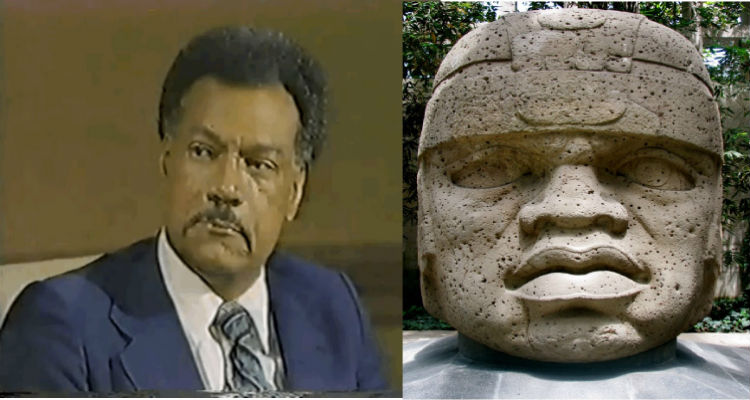
5 comments
Deprivement of knowledge, taking away an entire culture an stripping your native language away; how should a people respond to that. When I was young an it was brought to my attention white people couldn’t approach me on anything negative about being black.
Thank you for this information. Information/history like this allows me to begin to understand, not only how, but, why it’s so important for (others) to fear while followings us (African Americans) around. While these facts are breath taking & make me feel better about a lot of things around me that just aren’t right; these things reinforce why & how hard (others) are going to (whatever they do) too try & hold us down or back. If the shoe were on the other foot, then, I’d do the same probably, if that clarifies what I cannot & won’t put into words on this subject. Once again thank you. I hope to see & learn more from you in the future. I’d be glad to read, learn, and pass it around. I’m a student at this time & I’m only part time working, so while I don’t mind making a purchase from time to time, that’ll be all that I can do at this time. Goodnight & I look forward to hearing from you again!
Hi, There. I am replying to you to let you know you can learn more by joining Google + and joining communities and adding people that share black history. I learn a lot every day. I learned that we can travel spiritually in our sleep and experience 1,2,3,4 and 5th dimensions by raising our vibration up. We are spiritually connected. I learned about the importance of melanin and our “third eye”. I learned that the universe shares our skin color which is dark #666. There is more hidden, for some reason, it keeps resurfacing.
Greetings
I would like to post part of this blogpost on my site with a link to your site.
My readers would greatly benefit from the articles on your site.
Please let me know
I sure would appreciate it, if this information is placed on my site as it is very informative. I am interested in reading more! Is this information also in Spanish? I would like to spread this info to the Spanish speaking black people, as I am sure they would like this information. Thanks. Much interesting.